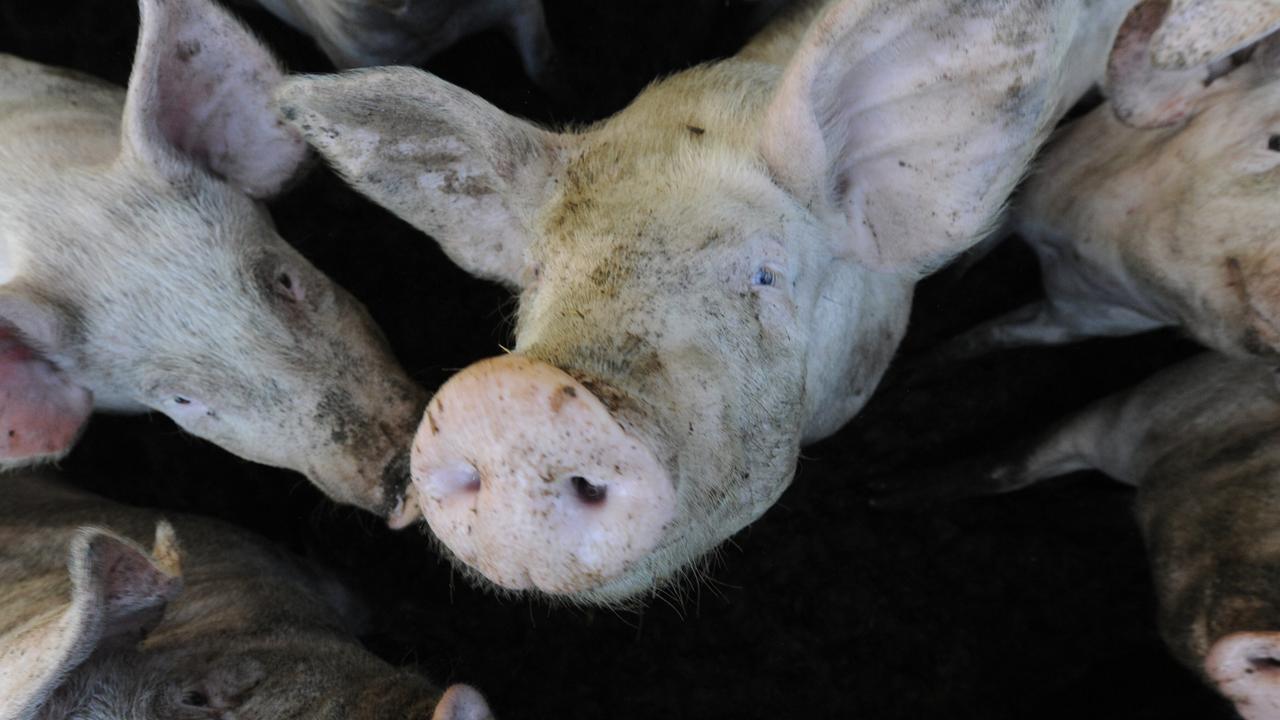Gas stunning of pigs induces panic: 22 seconds to collapse
Gas stunning of pigs causes panic and pain for an average 22 seconds, but alternatives such as electrocution and captive-bolts are just as problematic.

Australian research and the evidence of animal activists’ uncut footage taken inside Victorian abattoirs shows CO2 gas chambers take an average 22 seconds to render pigs unconscious.
University of Melbourne Animal Welfare Science Centre senior researcher Ellen Jongman’s 2021 study of gas stunning of 1769 pigs across five abattoirs showed “pigs lost posture 22.5 (seconds) after commencement of descent of the gondola into the CO2 chamber”.
The Weekly Times sampled nine hours of The Farm Transparency Project activists’ footage of pigs being gassed in Diamond Valley Pork’s chamber, which also showed it took anywhere from 18 to 27 seconds for animals to collapse into unconsciousness.
The footage is distressing to watch, with some pigs thrashing about gasping for breath.
Dr Jongman said minimising pre-slaughter stress was crucial to the process, which was best achieved by keeping pigs in their home groups, from farm to stunning.
She first saw pigs being gas stunned in Denmark 25 years ago, where pigs were kept in the same mob they lived with on the farm, from trucking to the processing plant’s holding pen and into the gas chamber.
At the plant, Dr Jongman said “it was silent, the pigs didn’t react”.
But she warned “if pigs are mixed, it’s terrible, you see a lot of fighting”.
Research has shown the most effective means of keeping pigs calm is to use a side-loading gas chamber, as used at Diamond Valley Pork’s Laverton plant and other export works.
Dr Jongman said side loading allowed the pigs to be herded into the gas chamber gondola as a group, rather than in single file as used with front-loading systems.

Evidence of pigs’ resistance to moving down a race can be seen in Farm Transparency Project’s videos of workers’ using electric prodders to force pigs to move single file into a front-loading gas chamber at Sinclair’s Benalla pork processing plant.
Dr Jongman said the stress caused by forcing pigs to move down races prior to electrocution and captive-bolt stunning was one of the reasons these practices had been replaced with mob-based gas stunning.
Dr Jongman said electrocution, unlike CO2 stunning, also posed far greater risk of animals regaining consciousness prior to sticking – the process of bleeding pigs out to increase meat quality and ensure death prior to the rest of the slaughter process.
Animals regaining consciousness prior to, or during, the sticking process is a major welfare concern, with UK research finding 15.6 per cent of electrocuted pigs regained consciousness and had to be re-stunned.
As for captive-bolt stunning, Dr Jongman said it just wasn’t practical on a large scale, especially given pigs have very thick skulls that are full of sinus cavities.
In contrast, Dr Jongman’s and international research shows few pigs effectively stunned with CO2 regain consciousness.
However, one of the problems with CO2 is that it induces a panic response as the gas hydrolyses to carbonic acid in the pigs bloodstream, inducing a panic response.
While proposals to use other inert gases, such as nitrogen, have been proposed, they are far more difficult to handle compared to CO2, which is heavier than air.
Dr Jongman research has found none of the alternatives gases are currently being applied on a commercial scale.




